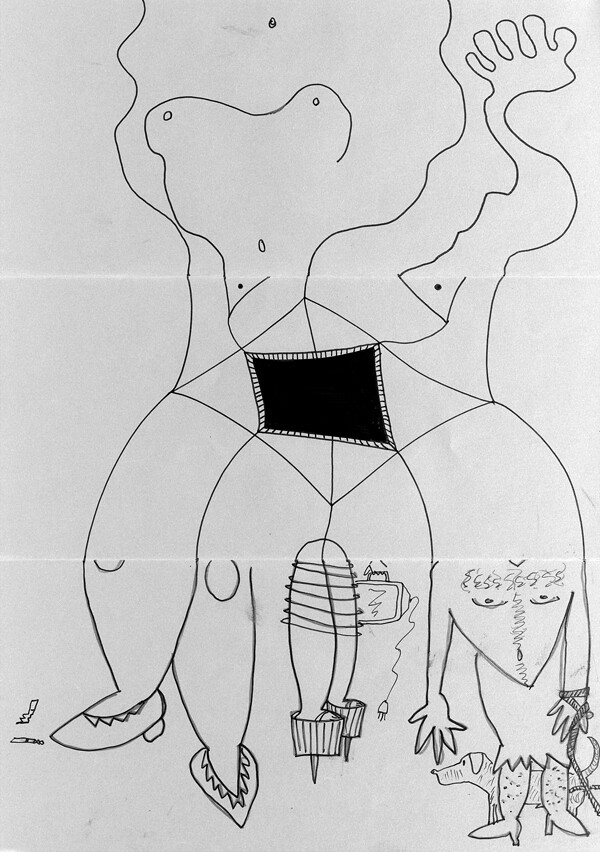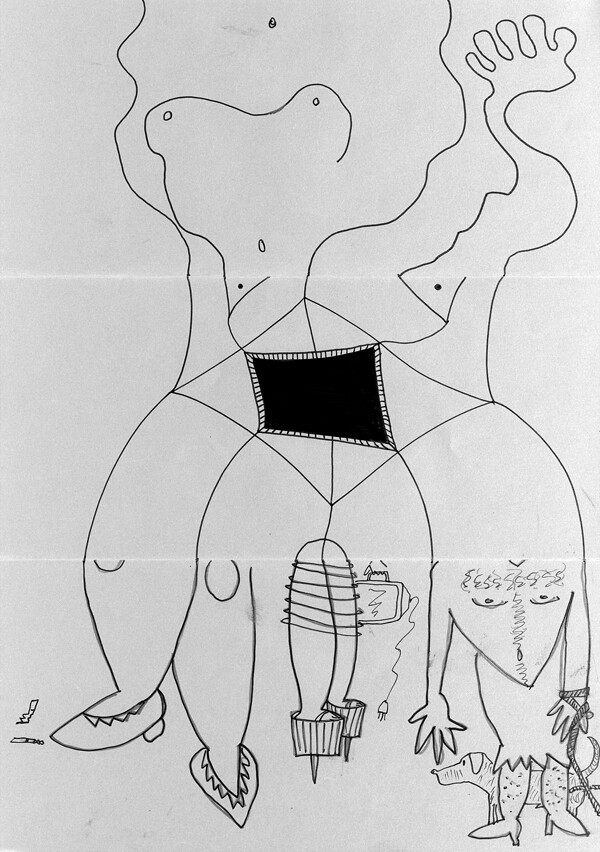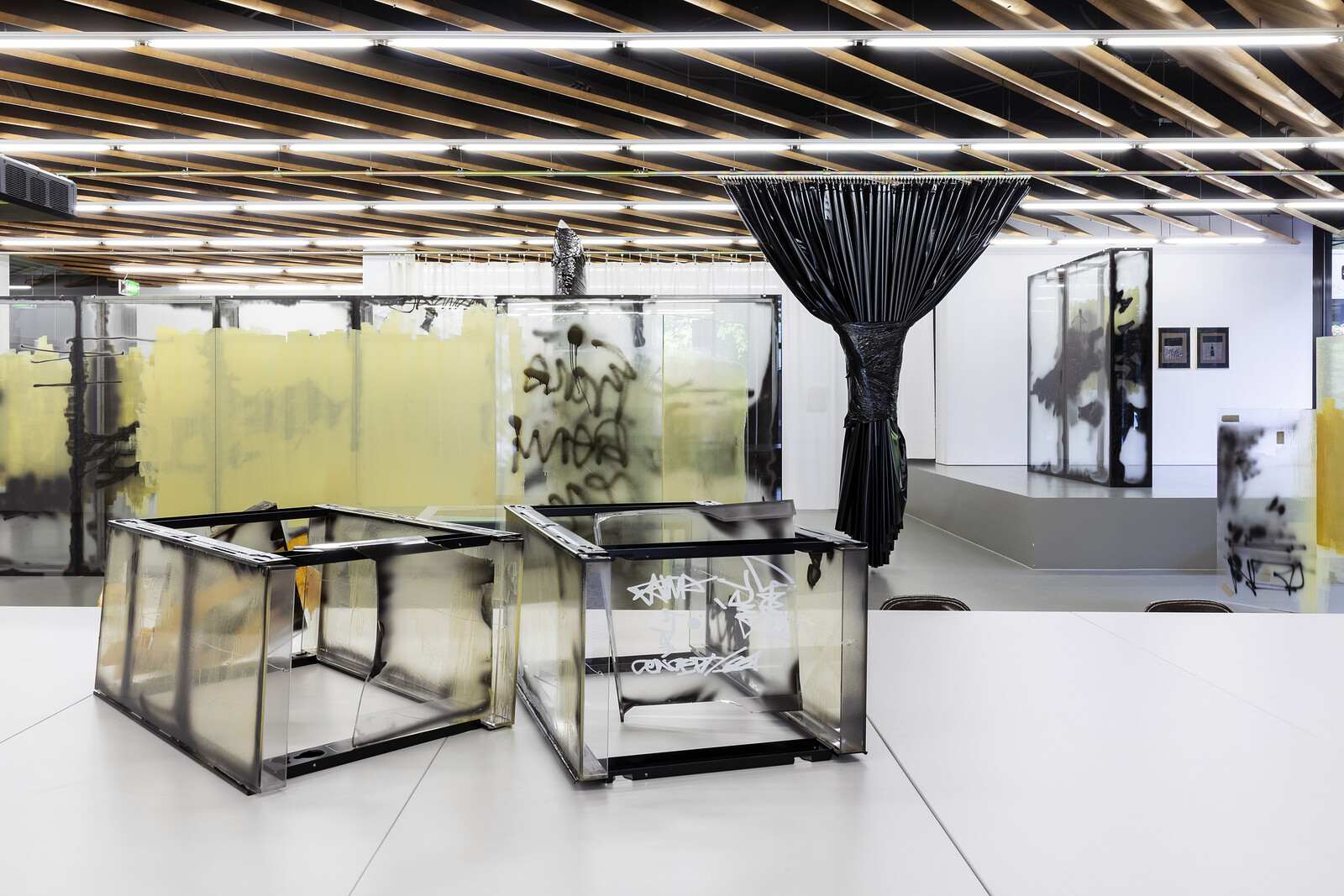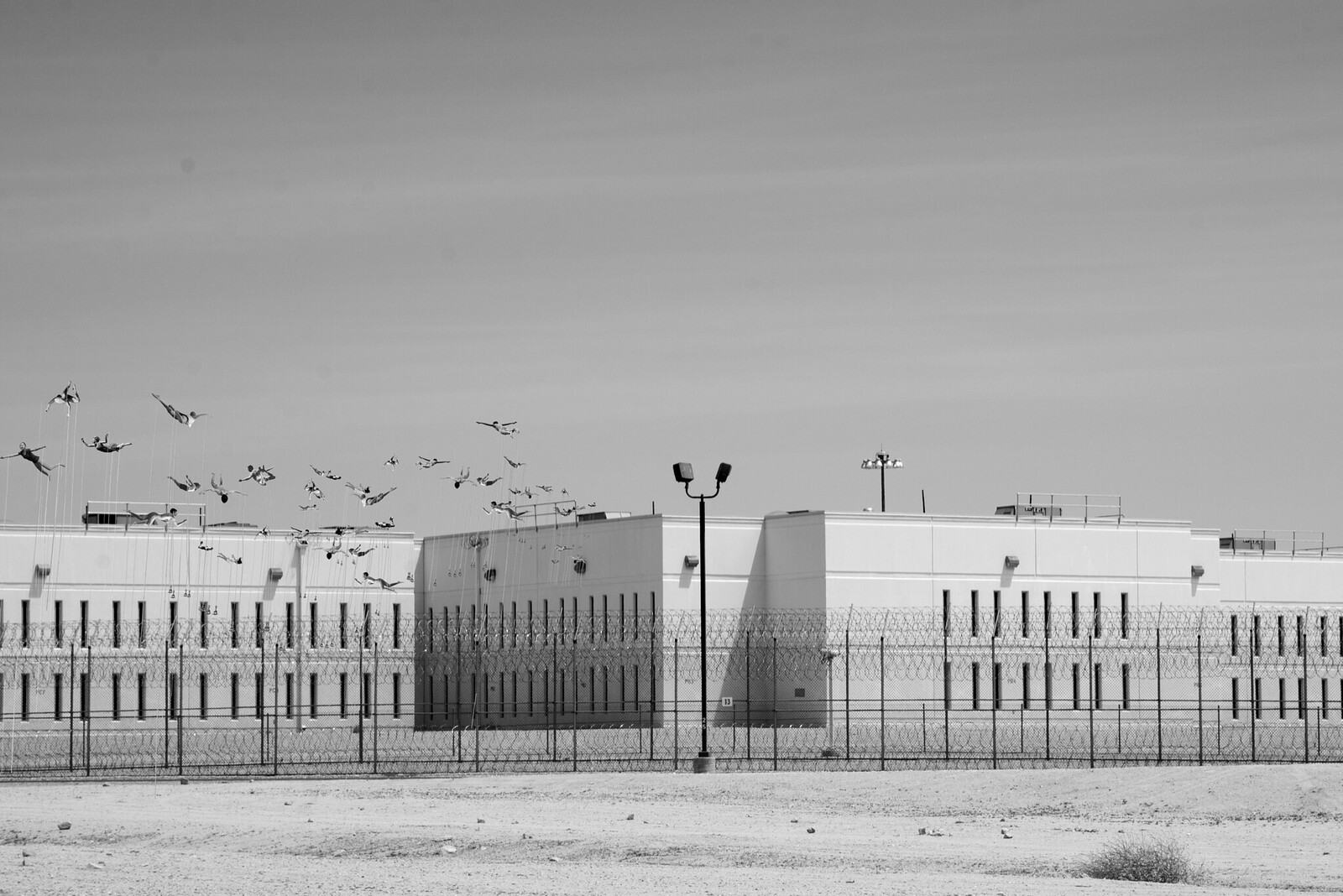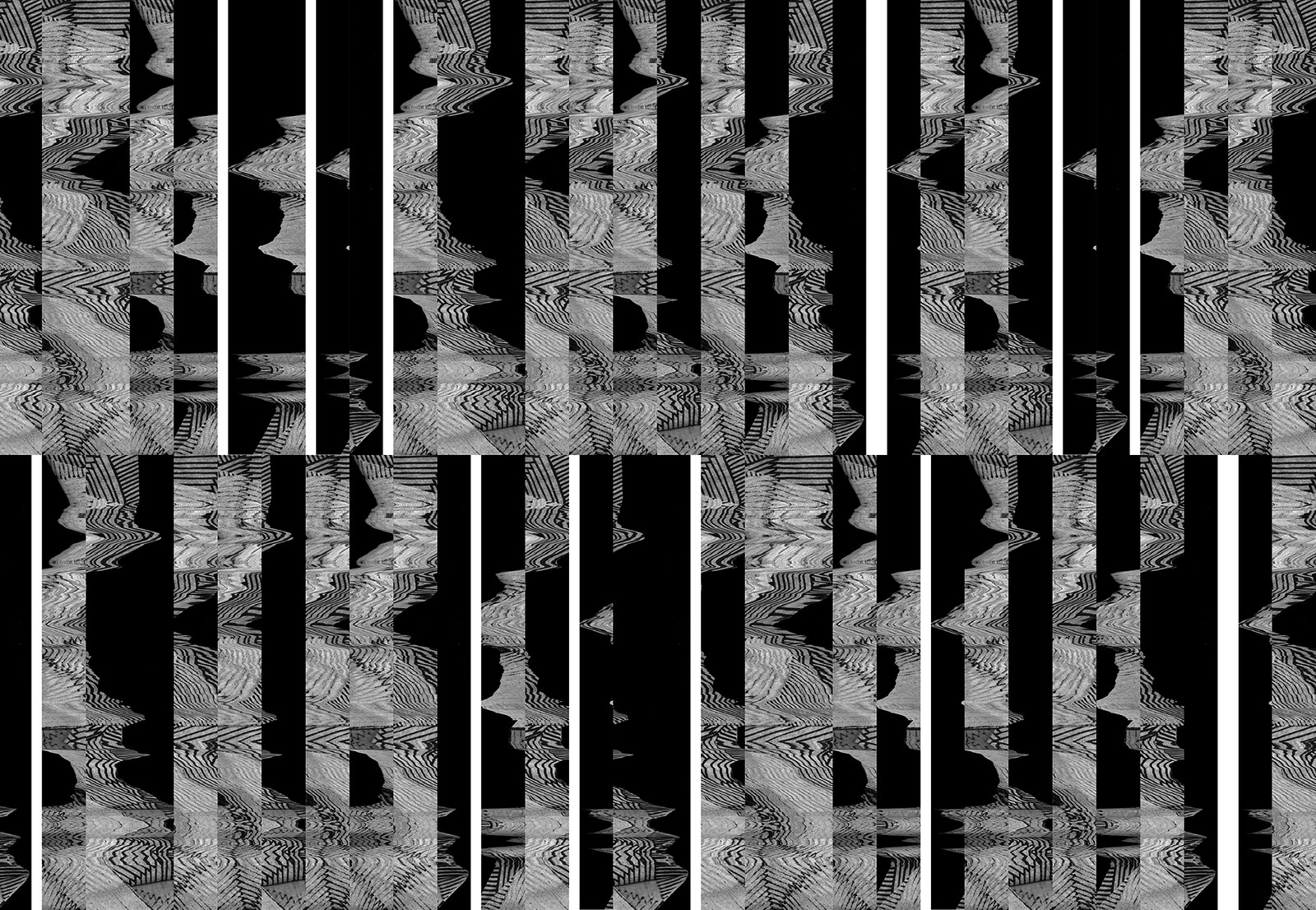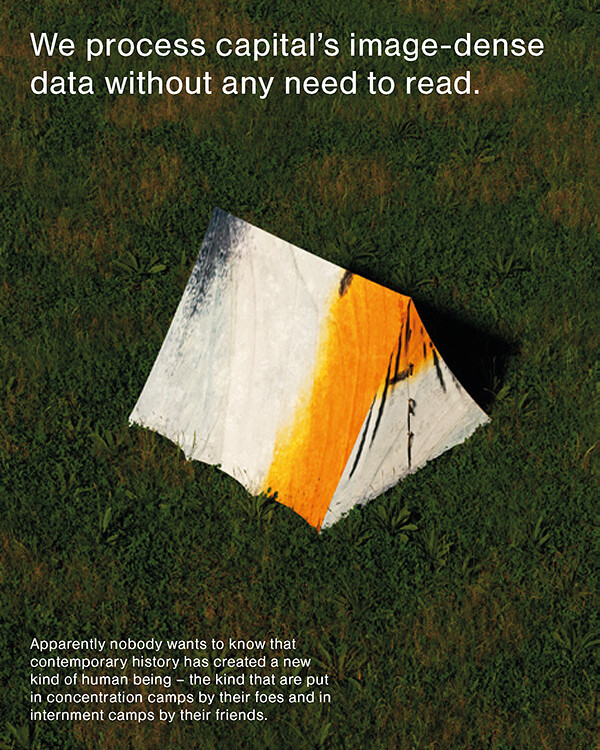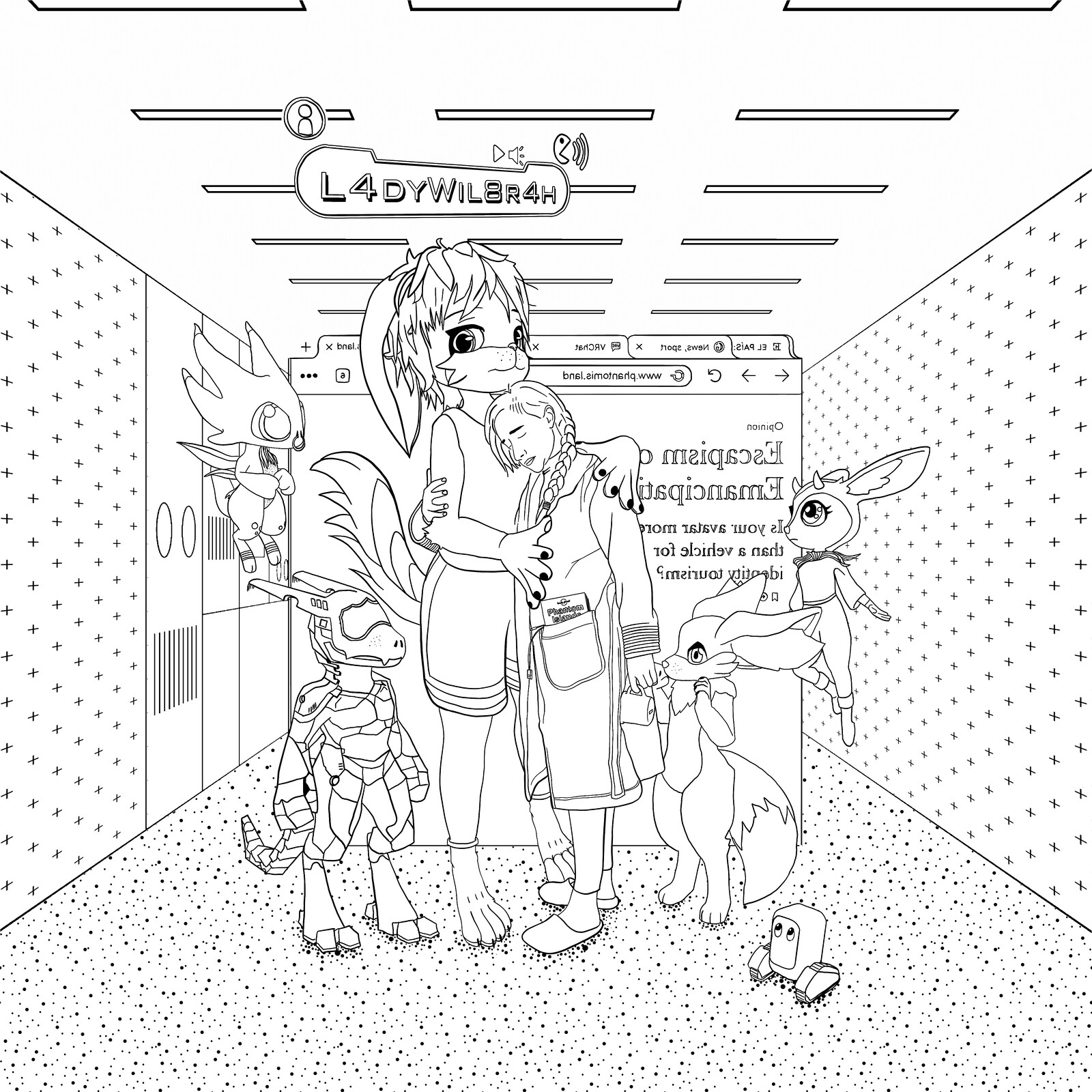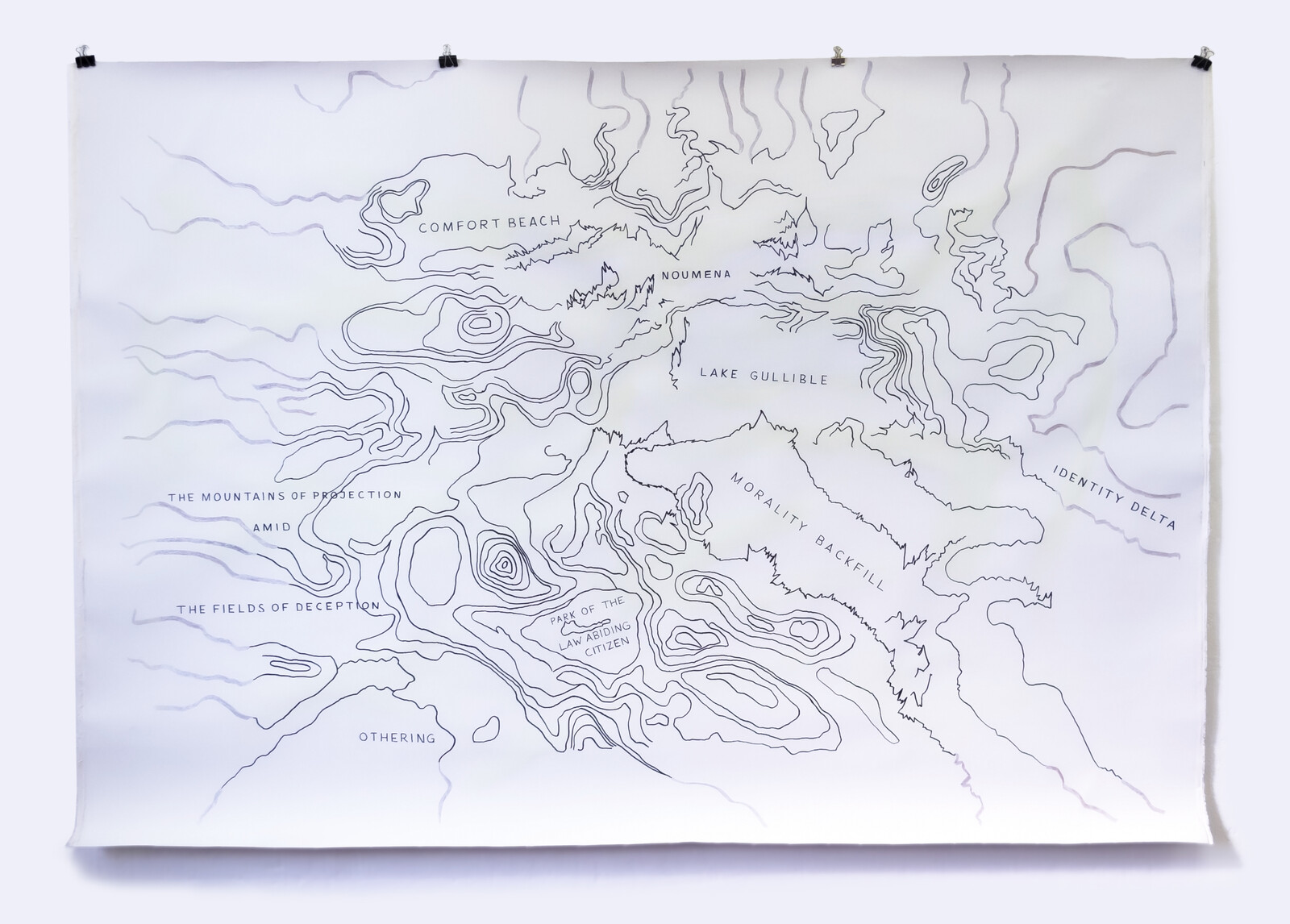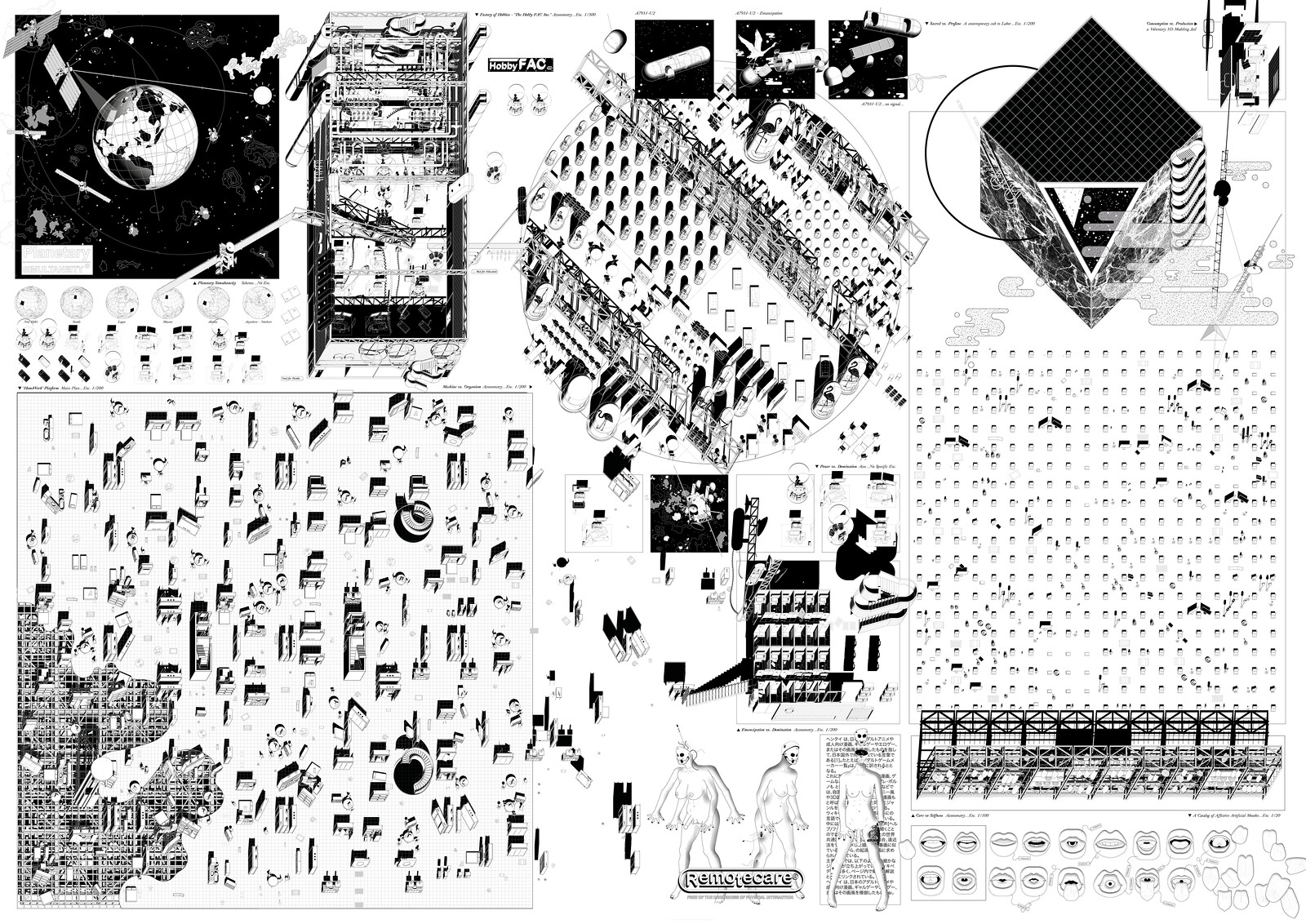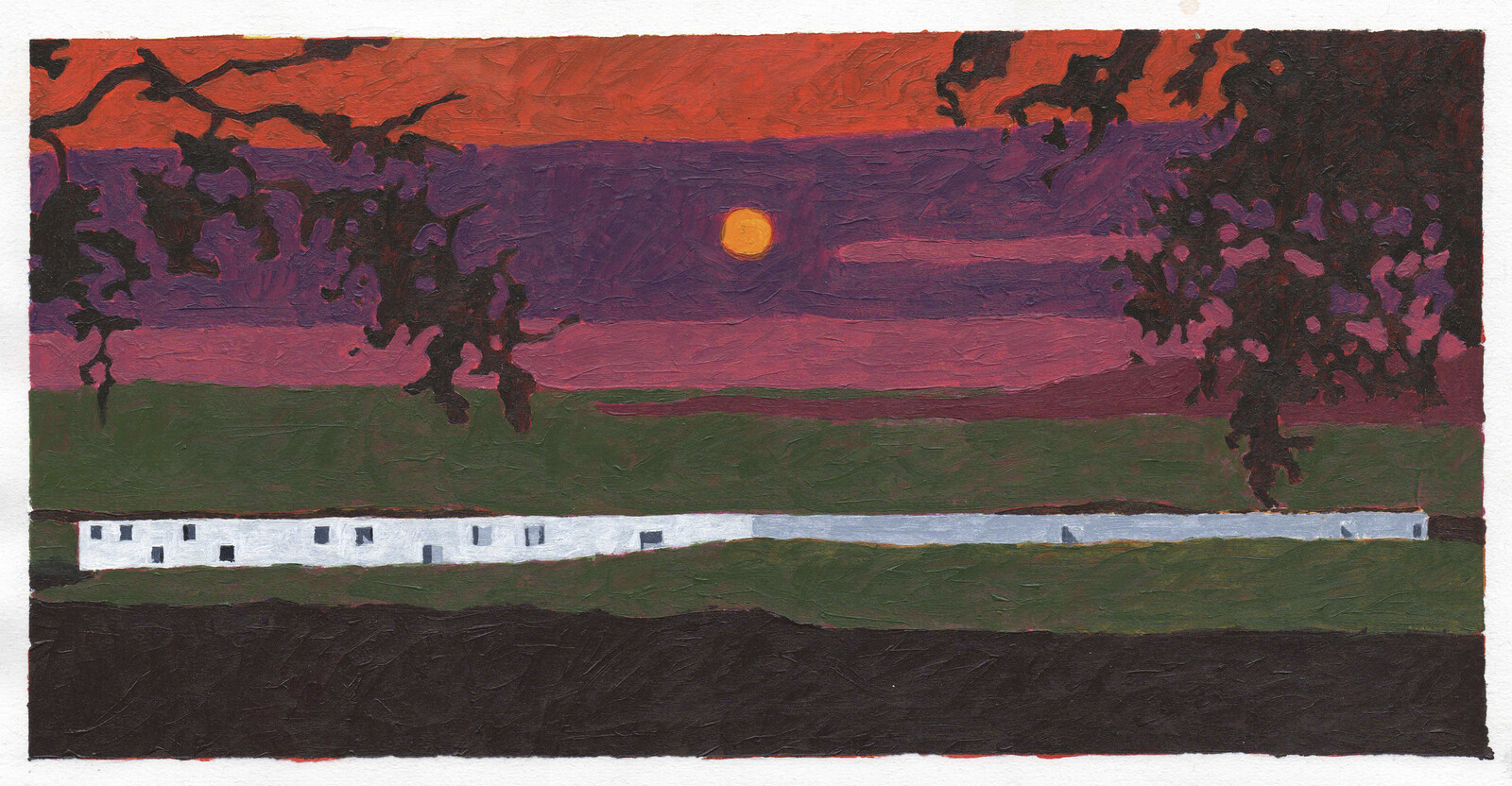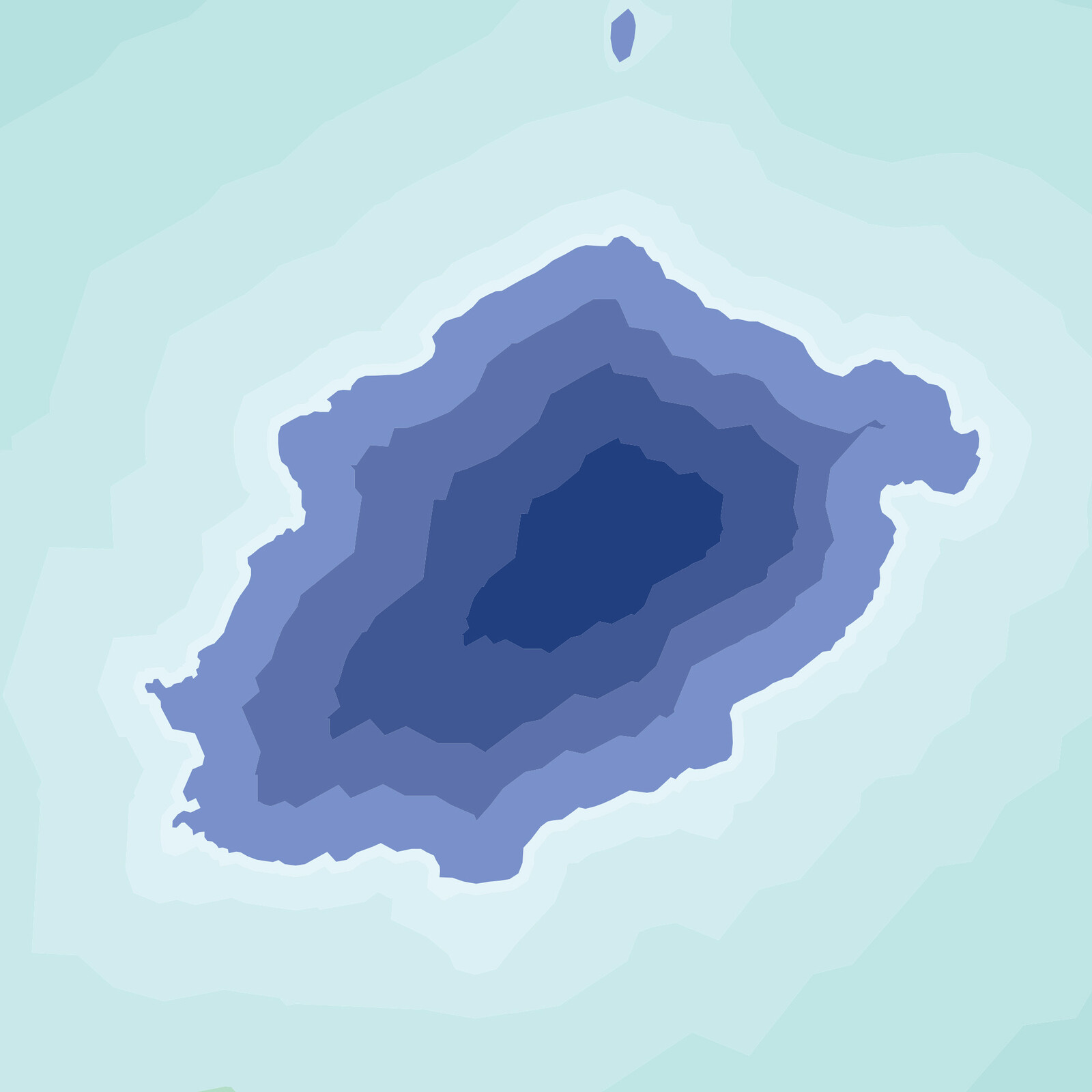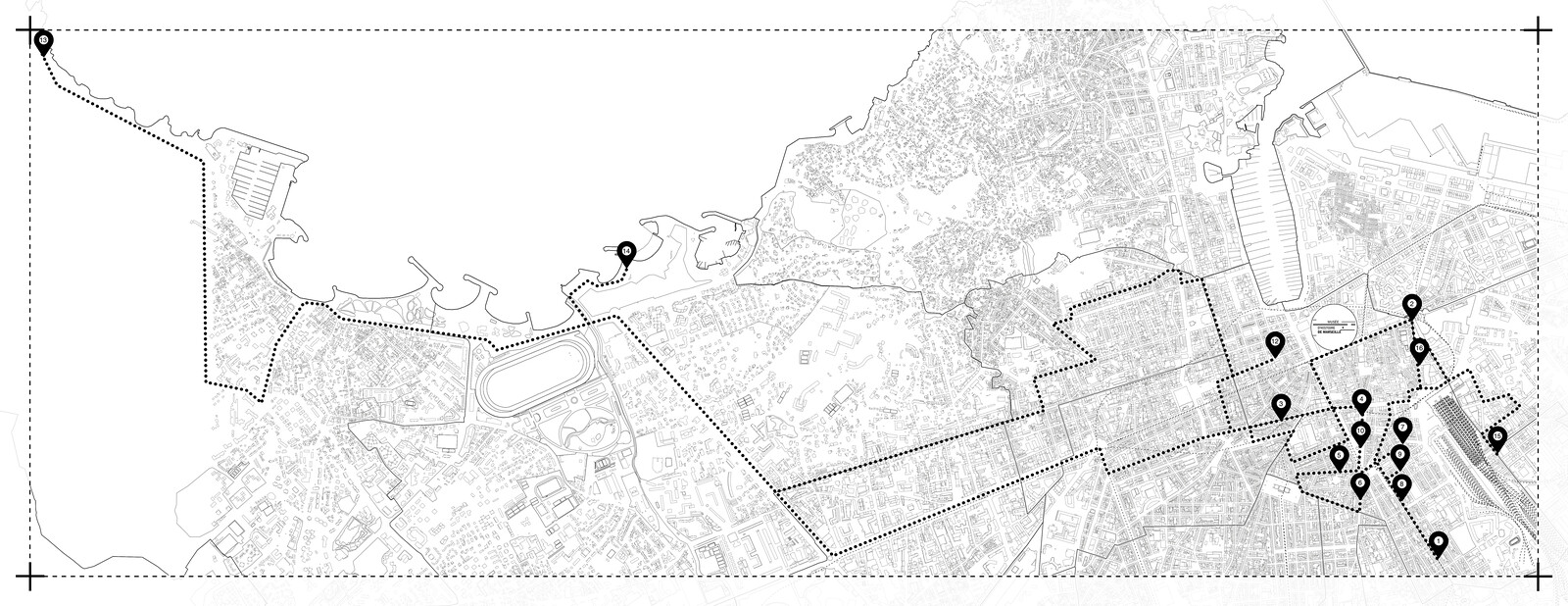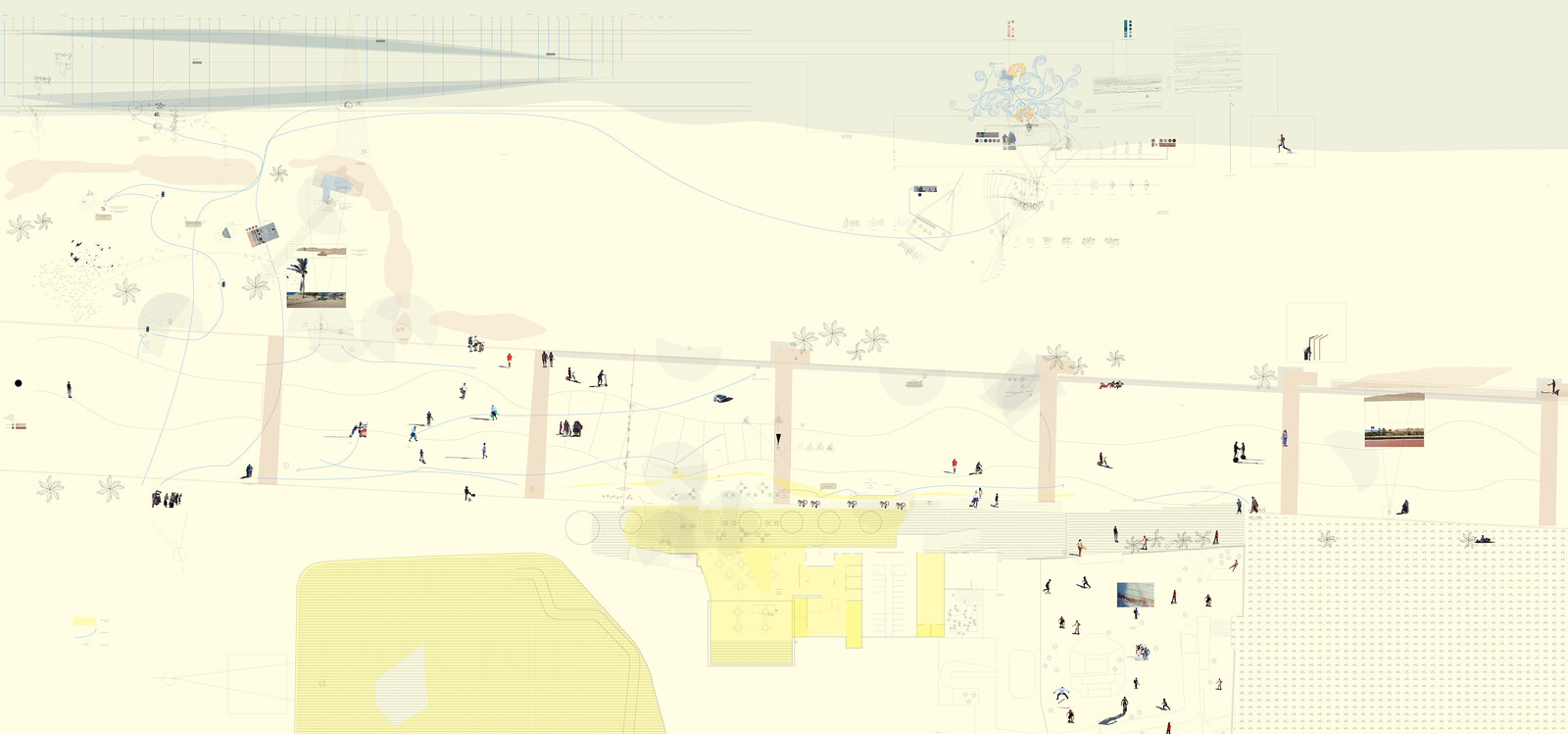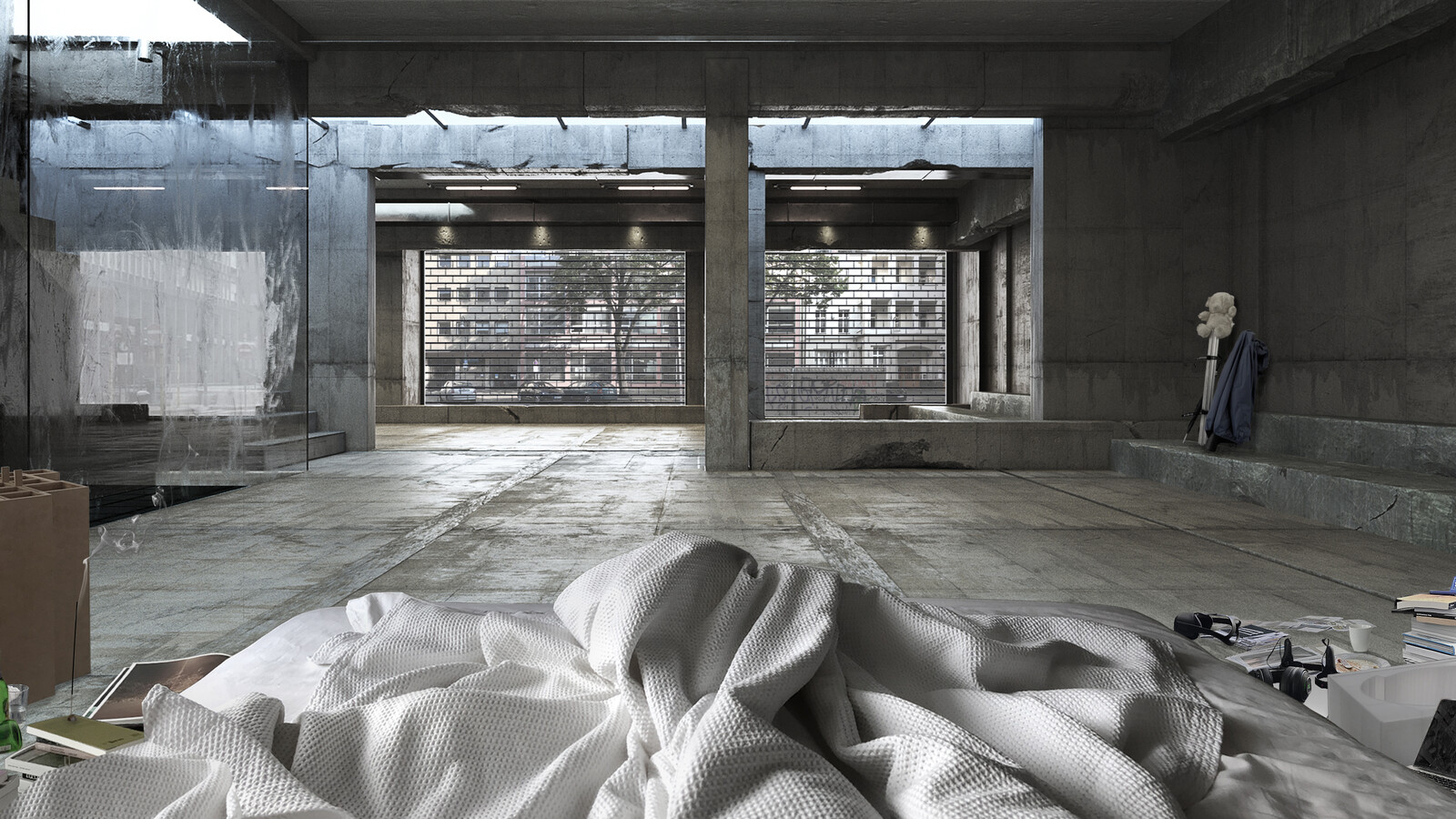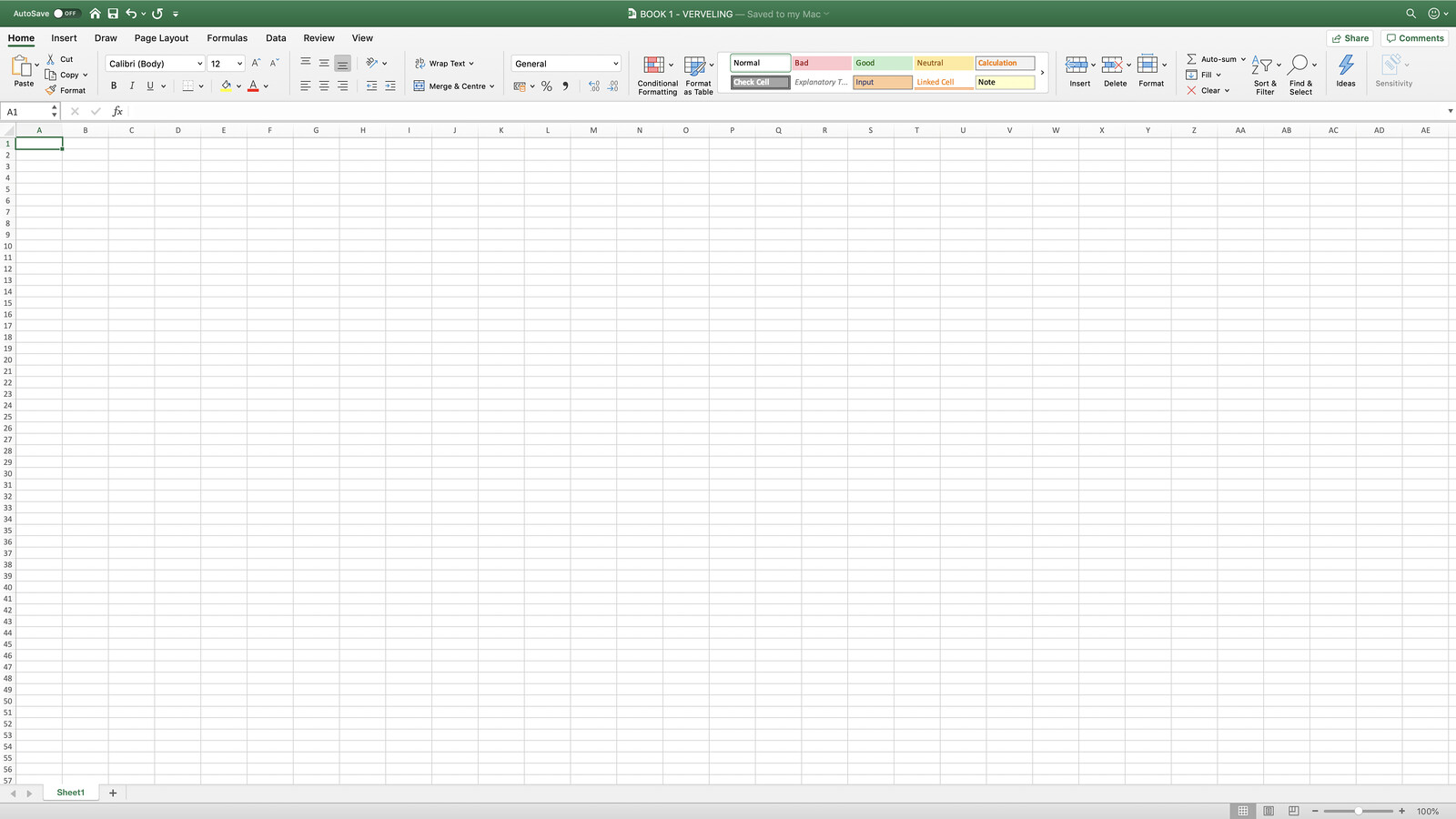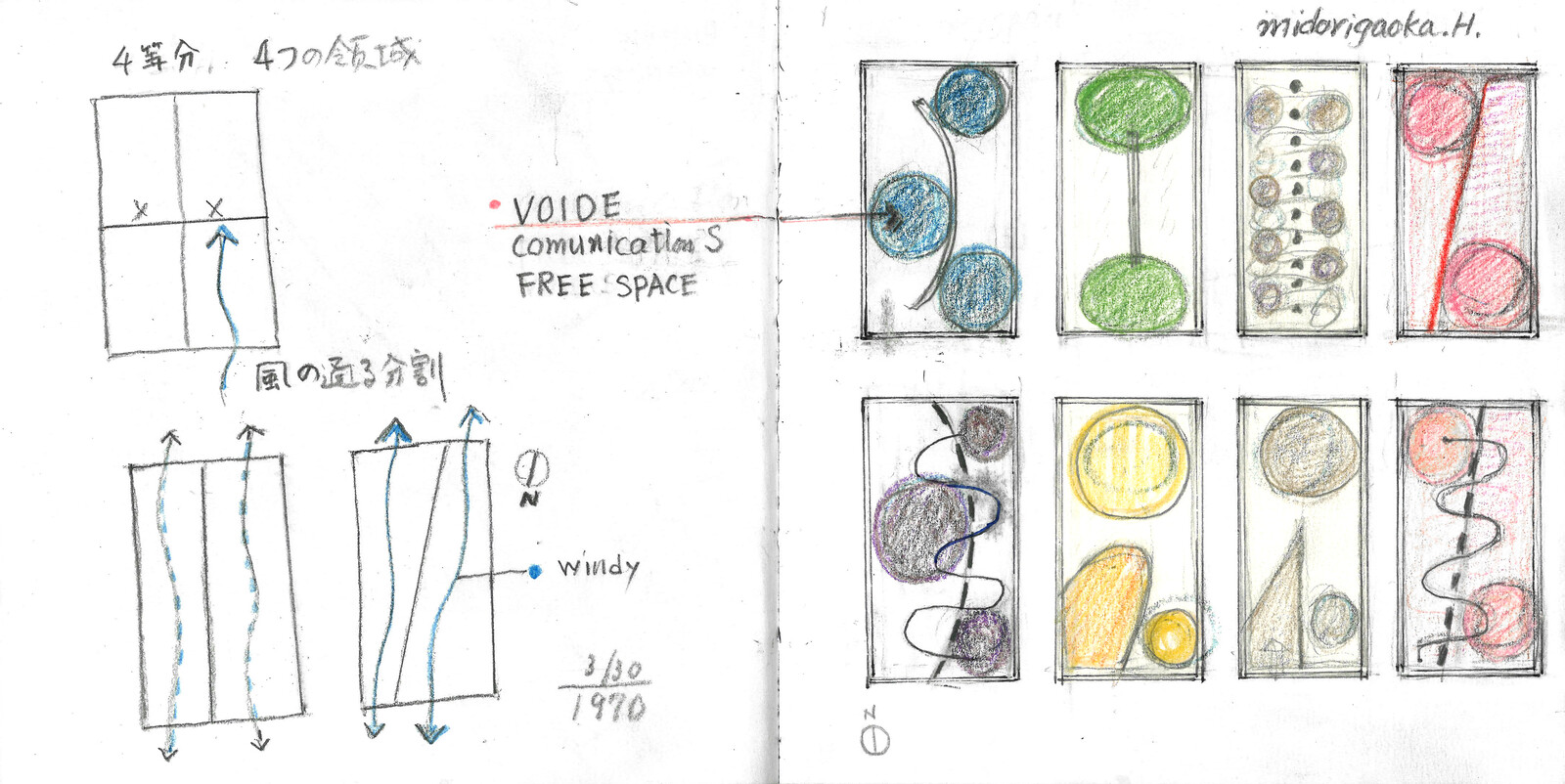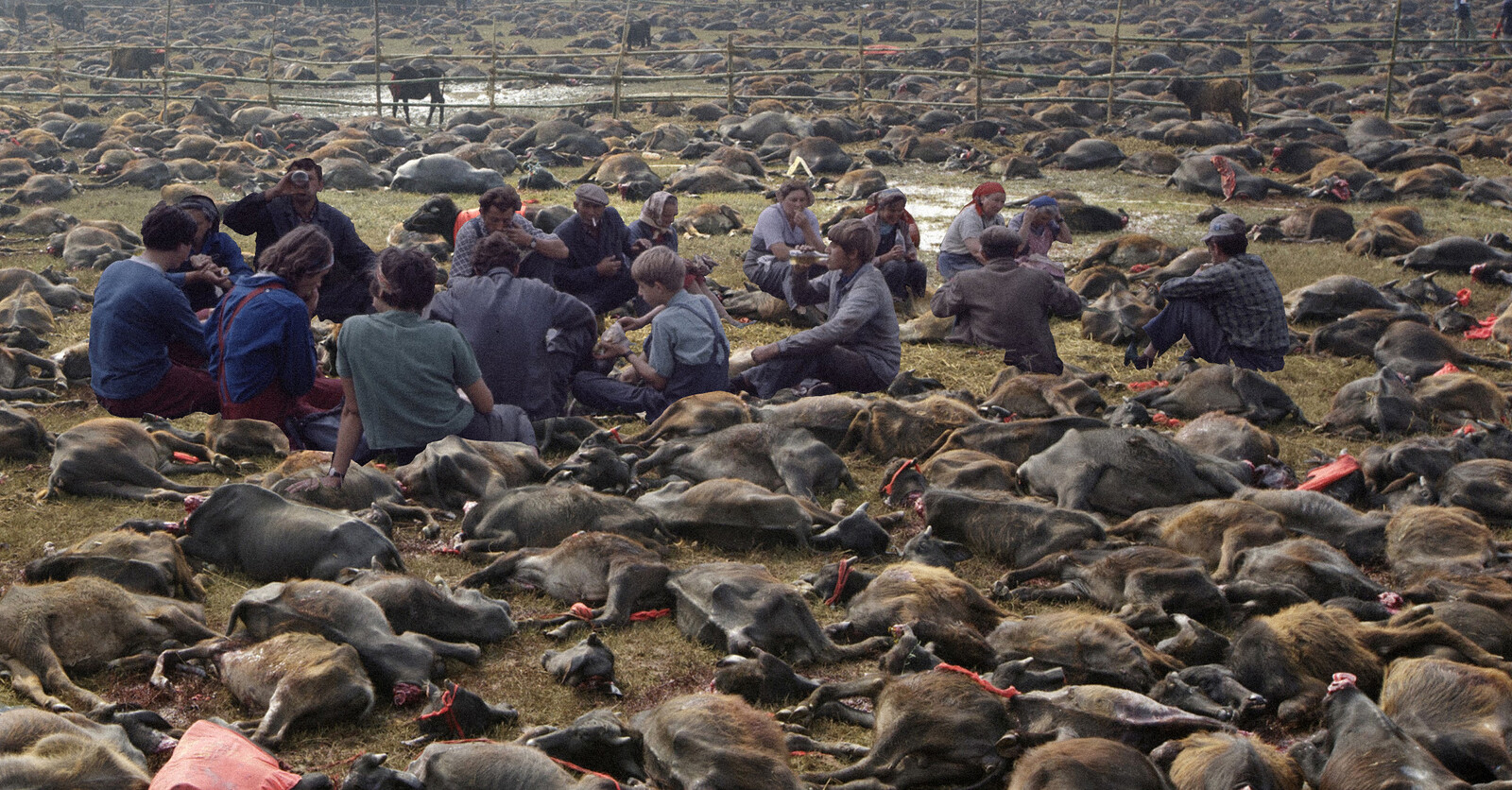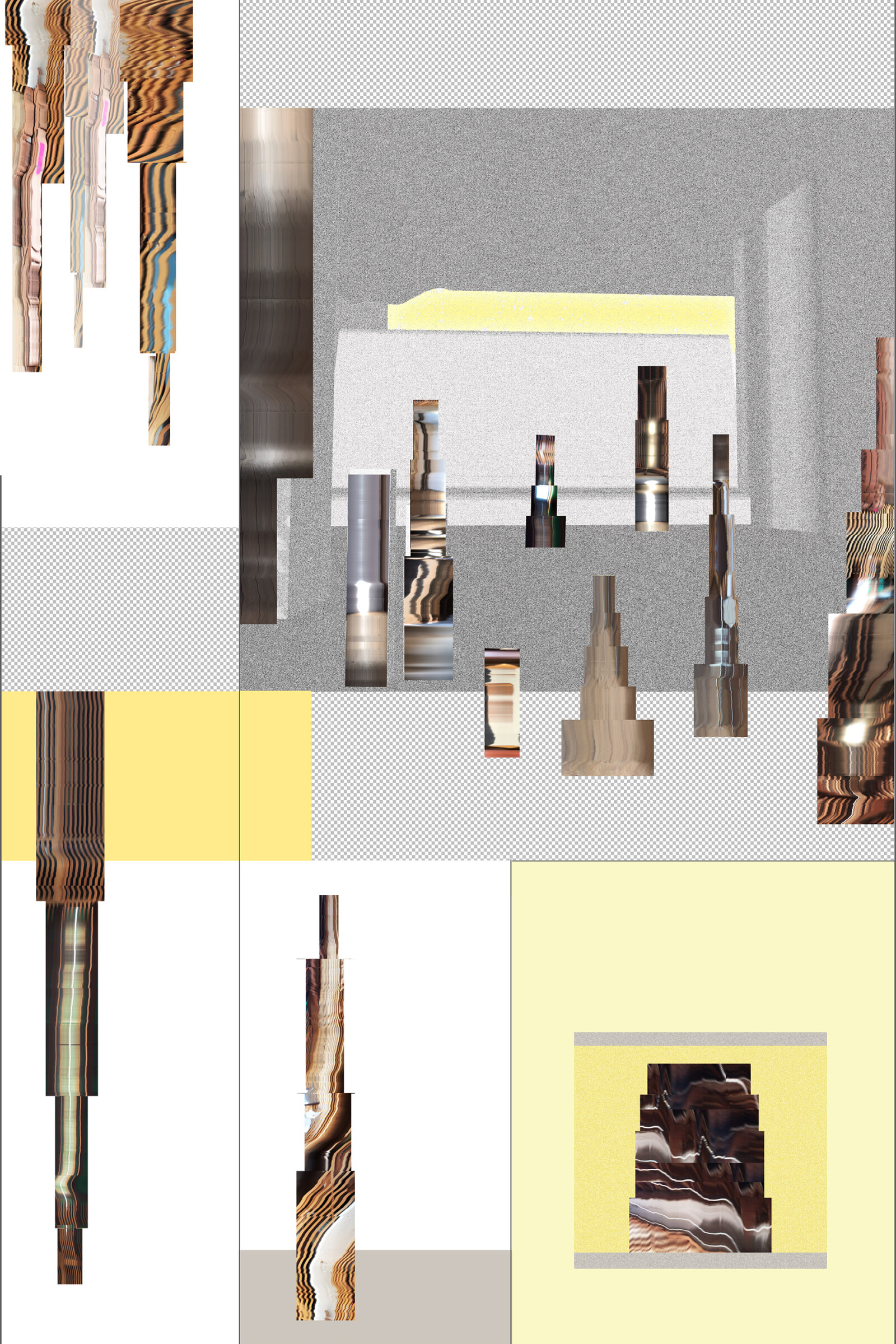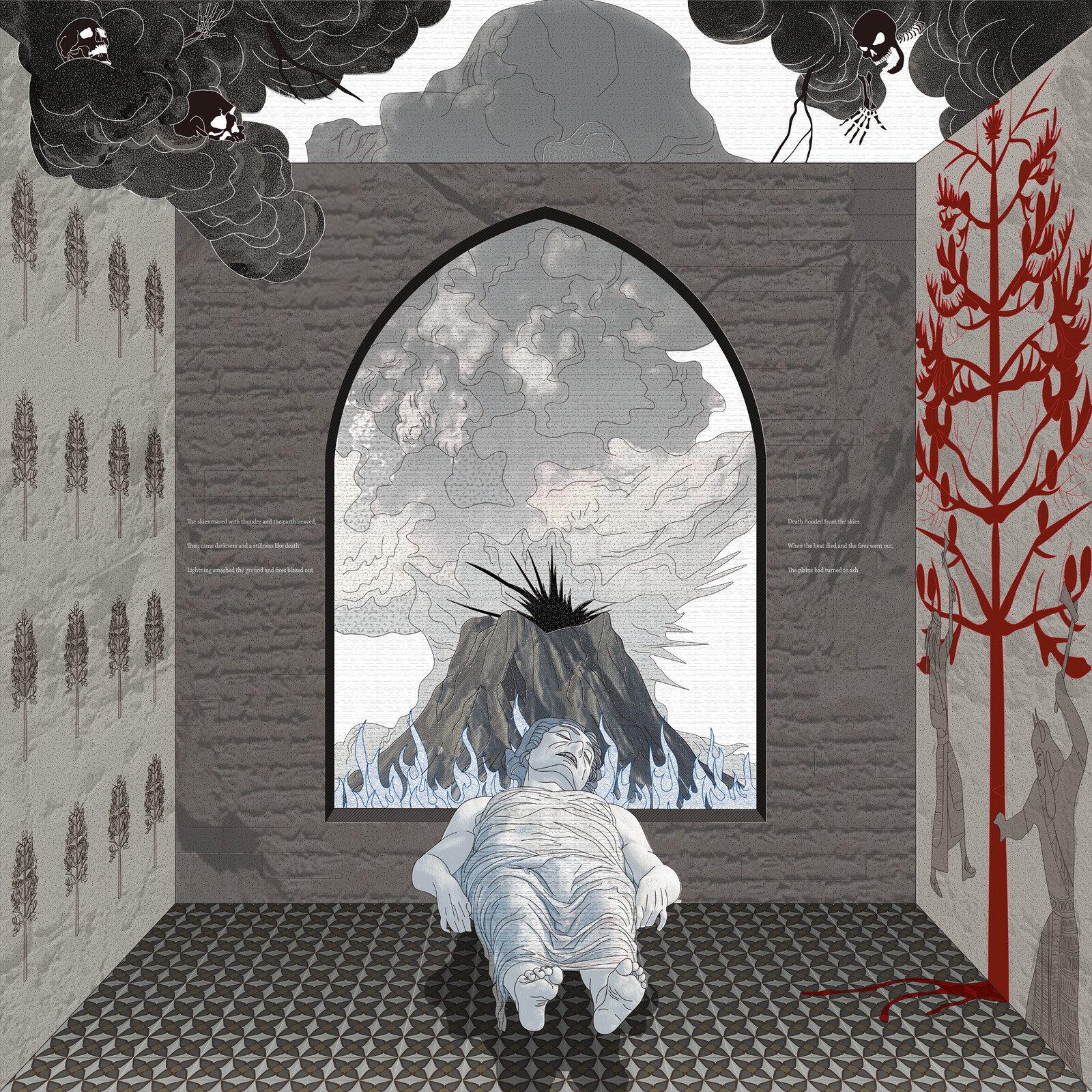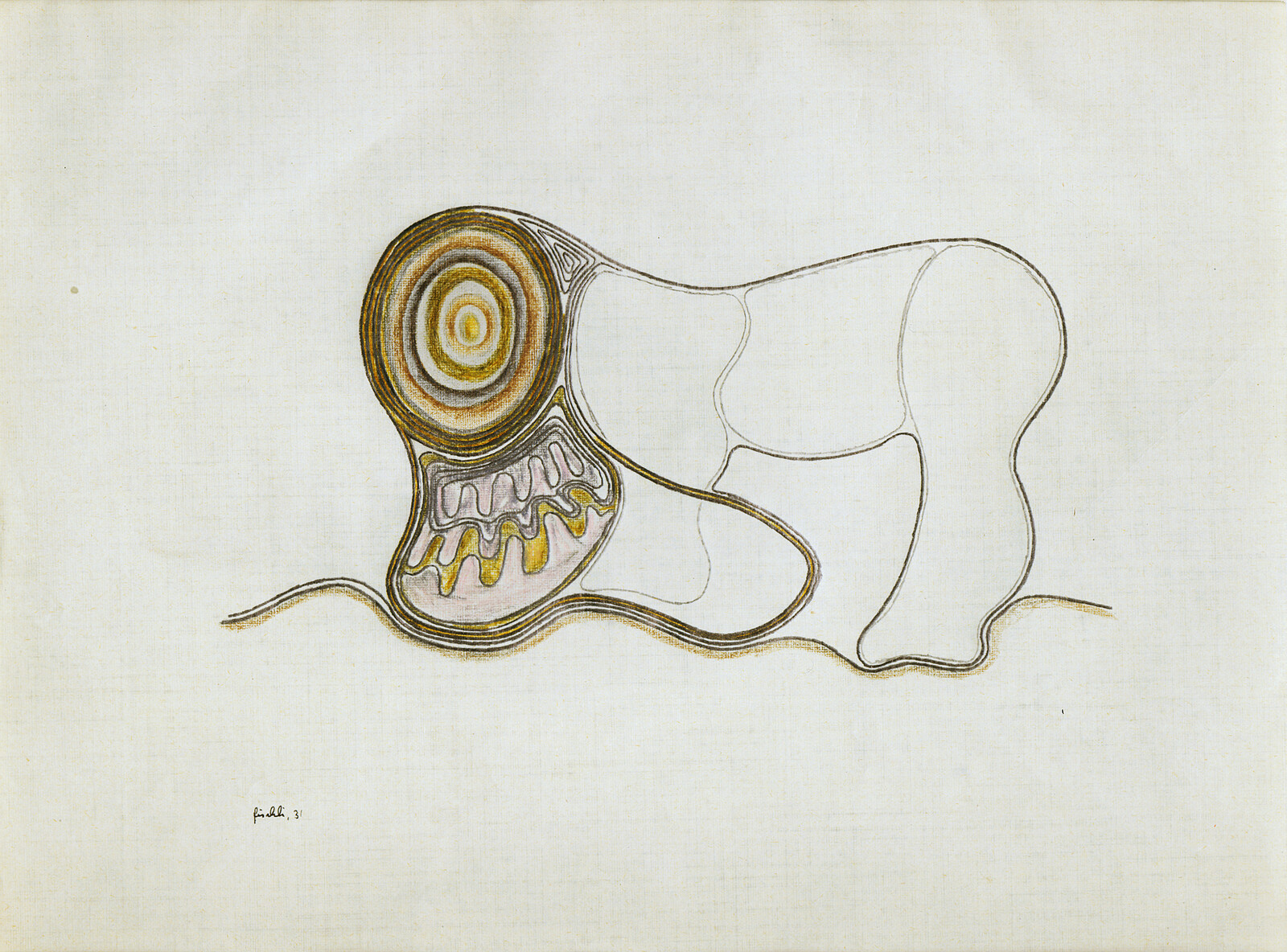The three of them were summoned to the parlor. As per the protocol, they would from there on out be addressed as Subjects A, J, and P, respectively. The entrance into the parlor eluded them. Yet suddenly, they found themselves inside; where sound was weight, a monotonous off-key pulse that clouds your vision. The telephone had been mummified. Its delayed and dampened rings fiddled with the locked doorknob. Draft wind pressed its face hungrily against the blinded windows of the nearly anechoic parlor. The parlor’s regulars seemed stuck in a self-evident routine. Drunks burped occasional half-formed thoughts to an evaporated audience. Conversation partners took turns pressing cassette players that reeled out different languages in reverse. Things and imaginings were reviewed on a television turned up to full volume. Inside, muted newscasters mouthed matters for everyone to nod along to. It was the parlor itself that avowed logic to those whose push-button nods preceded an announcement. Nose pressed against the wall, the private chef recited the same menu of the day as yesterday. Epiphanies and oddities were ill advised.
The Subjects gathered and took a seat with their backs facing the table. The game could now commence. The cook served them a paper skeleton folded in three parts, the recipe for a Cadavre Exquis. Each would see only the section containing his or her contribution. Starting on a new section required an epistemic re-boot, and backward glances were strictly prohibited. The paper skeleton would coerce the Subjects into an uncommunicative and unconscious collaboration, every contribution delivered on their own time, pace, and terms. Only after all separate sections had been completed was the paper unfolded and considered in its entirety.
A Frankenstinian creature was born by the Subjects’ first drawing. Perhaps coincidentally, it followed a somewhat generic structure of a head, torso and legs. Perhaps, from the bottom to the top, the drawing shows androgynous legs and onto them a crudely transposed spiderweb-like construction reigned over by an erupted plant cell. Or perhaps, something else. But whether unfamiliar or familiar, the forms depicted in between the lines cancel each other out once they approach the threshold. The grotesque figure suffers from too much discrepancy at the seams. Within the folds, the scribbles show a highly concentrated amount of self-similarity. Yet as soon as this asserted sameness reaches the nodes, a crossover, its inner workings start to crumble. The unsettling mismatch between the three sections makes each one of them into a mutually exclusive option. A taunting realization dawned upon the Subjects. Even as their own creative urges freely rippled out scenes of a different nature, the lack of a common ground crippled their efforts. In a ridiculing hybridity, they did not reach a state of collaboration, but rather collective individuality. Even in lacking access to others’ realities, the nature of the game still allowed for them to be misinterpreted. Lacking access to others’ realities, the Subjects realized that their everyday life, and imaginative life, was restrained in oblique yet ubiquitous ways. Willingly, they saw their existence mapped out across a cartography of confinement that was as if everywhere and nowhere at all. From there on out, they subscribed to their titles as Inmate A, J, and P, respectively.
To illustrate this point further, Inmate P volunteered to fulfill the didactic segment of the game. Inmate P drew an instructive sketch filed, as per the protocol, under “what confinement looks like.” The sketch shows a first-person view from the perspective of someone who is, unquestionably, in prison. The motifs that emerge from the sketch offer a distilled understanding of the basic contrasts that shape a life in confinement: where those outside and those confined inside exist in opposition. Longing looks and reveries of belonging are exchanged from the latter into the former, making the garden into a brightly colored, nerve-wracking reminder of a world where life roams unapologetically. But flights of the imagination aside, the confined are barred from mobility into a life outside. The irreconcilable infrastructure between the two realms is as poignant as the shape-shifting appearance with which different ends are drawn. Behind bars, the inmate’s outlook is both framed and limited. The repetition of vertical delineation, which even extends beyond the window’s view, shows how a sense of perspective is always met with fragmentation. As if to remind the inmate of her own compartmentalized existence, or to tame transgressing eyes to see only portions instead of wholes.
While bars exacerbate boundaries, the garden fights valiantly against limits by surrounding itself in circular instead of vertical shapes. There is something highly emancipative about the circular shapes that follow a permeating, transpersonal, and viscerally intuitive movement winding outwards, as though having escaped and escaping still. In contrast to the connective tissues seen in the garden is the setup of society that lies beyond the fence. Out there, the vertical patterns, shapes, and directions are suspiciously reminiscent of the jailbird’s shortsighted sightline. If this spatial disparity is mined for latent content, it raises a dire predicament. In a world where belonging—to ideologies, ideas, churches, institutions—is a choice, we are—maybe more than we would like to admit—just as incapacitated in our access to them and blinded by parallel lanes.
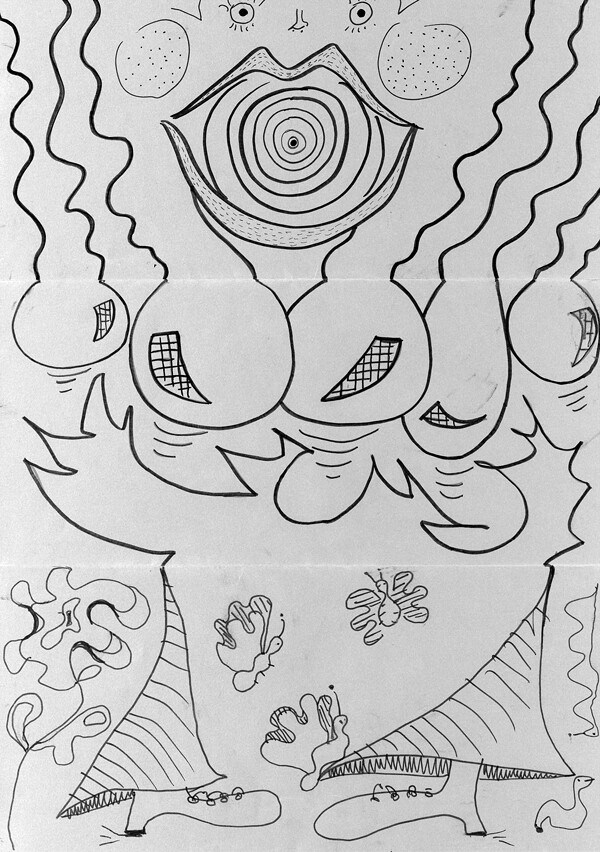

Drawing: Inside Outside, 2020.
Proceeding with the game, the third drawing was duly unfolded. Its obscure message was disappointing. The Inmates were hoping for a blueprint of whatever it was that was closing in on them. After a batch of blinking, eye-rubbing, and panoramic head turning, they unanimously declared their obstructions as invisible to the immediate eye. An appeal was made on the remaining senses, on an ability to hear and readiness to listen. For a wisp of a moment, the eyes on the third drawing blinked back as though to tell the inmates they were on the right track. So, they opened their ears and minds to the muted news still playing in the background, but found that it spoke only of what they felt like hearing, or had heard of before in all-too familiar terms.
Taking the tunnel of blue light into their phones with endless apps, media networks, data, and information similarly did not take them very far. Reconvening to reveal their findings, they digested the worrying polarization of their epistemic baselines. The Inmates’ personally-curated cauldrons of knowledge—their predictive potential seasoned by a potent dose of algorithms—did not stir up anything but incompatible truths. Neither walls nor bars held them in place, but rather it was the unending, unquestioned echoes that sealed the confines to the chambers of their own making shut. Obliviously, the building blocks within their own belief system might actively undermine or omit the relevant voices outside of it. Just as in the third drawing, a mouth may open generously to pierce the stillness within others, to find a common sound. Its truth might conquer conversations, reach onwards and outwards to resonate inwards with others. But as soon as the chain reaction starts beating against the borders of its own bubble, its credibility can just as easily be popped, snowed under by someone else’s self-selected informational network. And finally, somewhere far, far away, with not a single public forum in sight, you’ll find three little butterflies fluttering in blissful ignorance of any need to escape.

Drawing: Inside Outside, 2020.
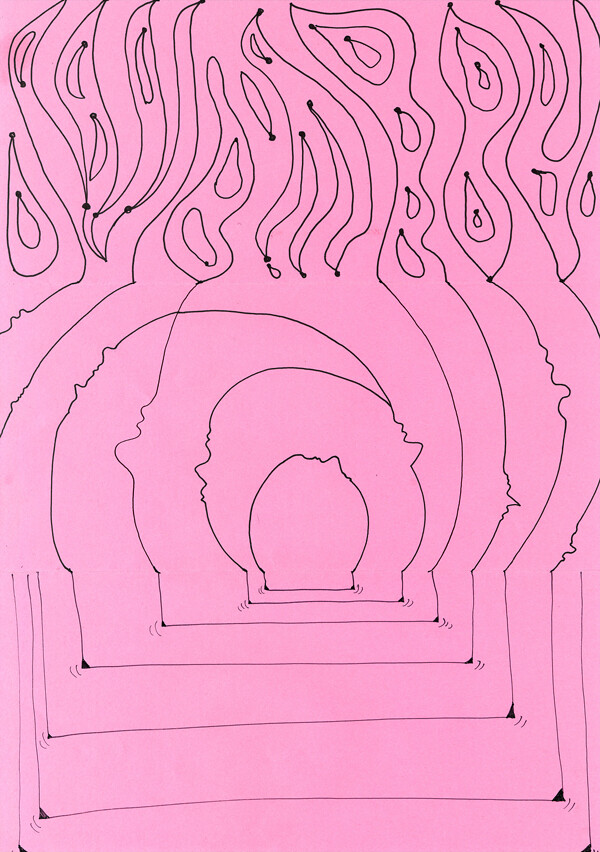
Drawing: Inside Outside, 2020.
Drawing: Inside Outside, 2020.
It’s not that the two following Cadavre Exquis drawings lacked direction. It’s that their folds could just as well have been filled in by the very hands that do not know how to switch the channel between Fox News and CNN. Some of the navigation points within the folds are saturated in somewhat of a smug certainty. The certainty of an outstretched road insulated from dead ends; a horizon ruled over by a fixed, iron gaze. And the road’s followers flock to the drum of that fixation, with past beliefs reinforcing the new. The chaos, the crashes, the turmoil they might be walking in on eludes them. If the means for communication are increasingly becoming self-reinforcing and waterproofed against contrary comments then so are their participants. Wayfinding happens in a vacuum, and people blindly propel ahead with bias as an overruling compass. Muffled profiles are unable to break from their own speech bubbles. In confinement, inmates stand back-to-back, yelling love at the top of their lungs, only in the wrong direction, facing away from one another.
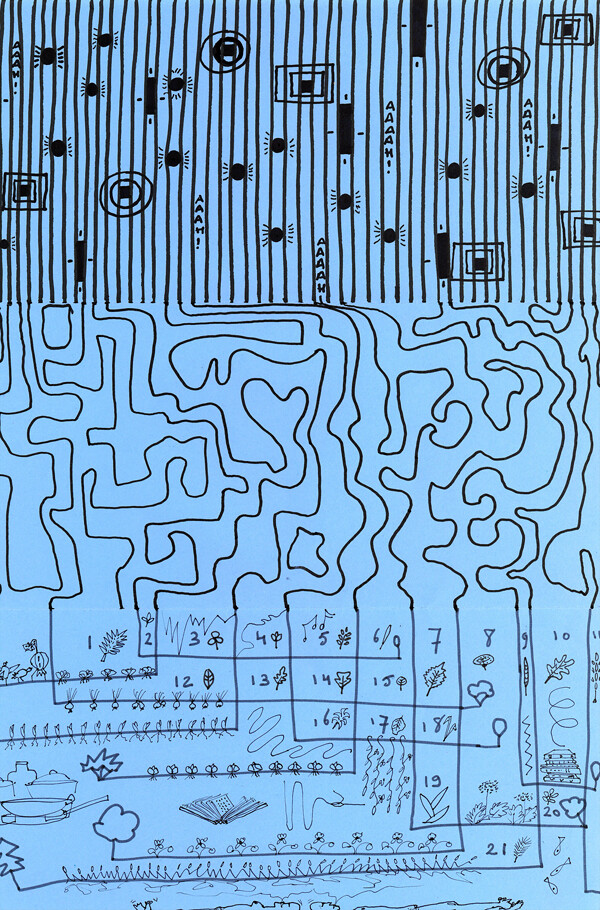

Drawing: Inside Outside, 2020.
And so, the labyrinth thickens and grows hazier. Weren’t the Inmates supposed to be systematically alienated from perceptions at the precipice of their own? Yet out of countless varieties, they reached consensus across disharmony. They individually drew up the collective labyrinth where they dwelled through on their own. With the final revelation, a small and capricious epiphany had managed to sneak into the parlor. Namely, that our everyday life should happen at and across the folds of the Exquisite Corpse, as nonsensical as it may seem. Those perversions are necessary, if contamination offers the means for an unbiased collaboration. Opting for the transpersonal is to revel in tension and transgression. Our shared atmosphere may seem strange or silly, but that does not mean it is not worth looking at. For only that which is already known can anticipate the future with a pinch of surrealist salt.
Confinement is a collaborative exhibition curated by gta exhibitions and e-flux Architecture, supported by the Adrian Weiss Stiftung and the ETH Zürich Foundation.
Category
Drawings by Aura Melis, Jana Crepon, and Petra Blaisse, partners at Inside Outside.
Words by Merel Haenen, writer for Inside Outside.
Confinement is a collaborative exhibition curated by gta exhibitions and e-flux Architecture, supported by the Adrian Weiss Stiftung and the ETH Zürich Foundation.
